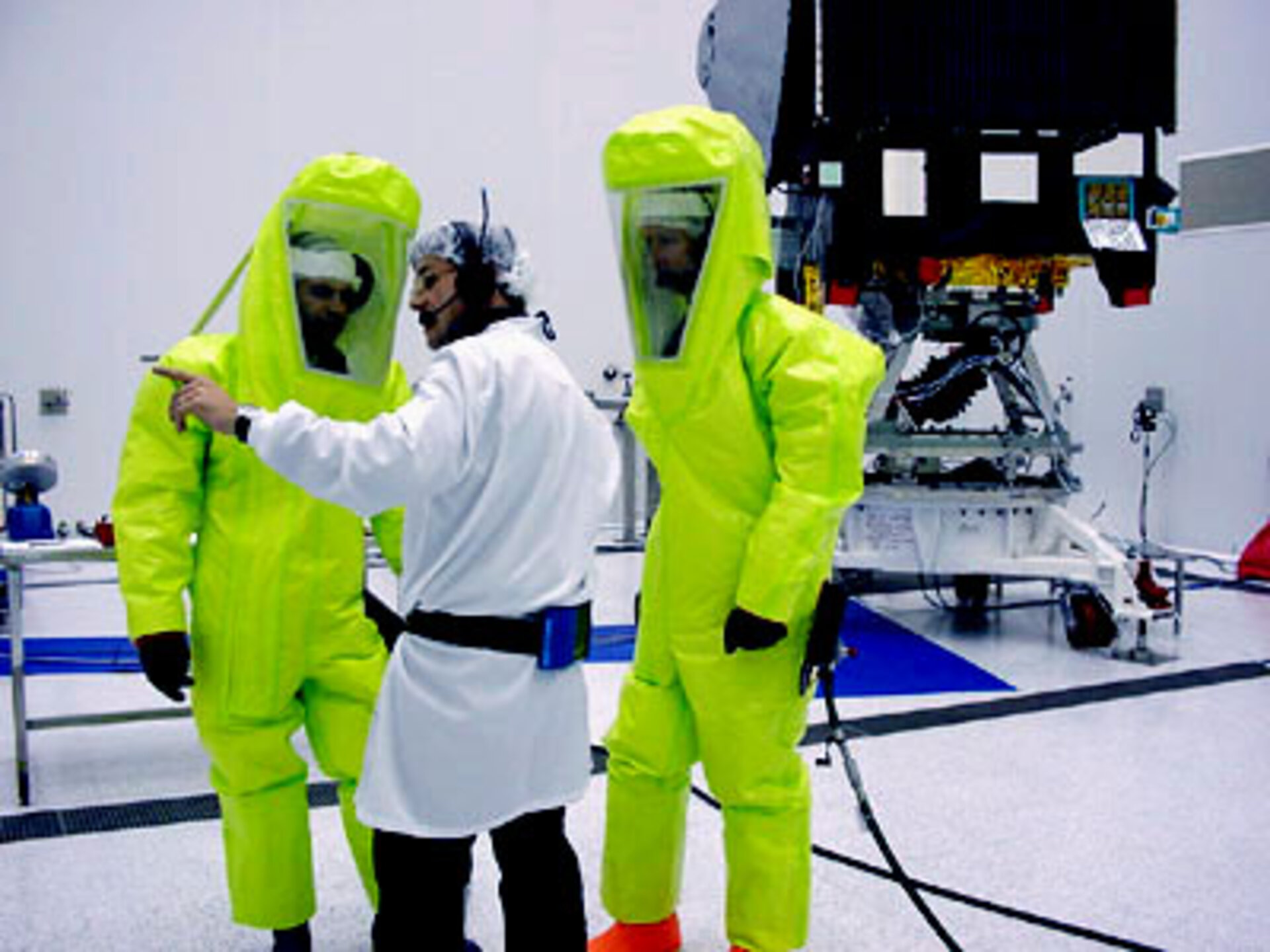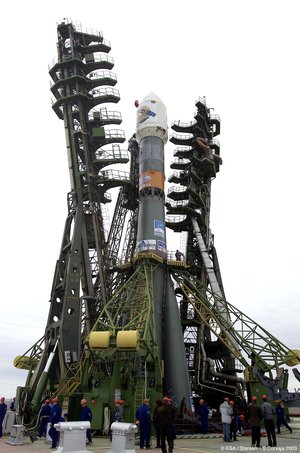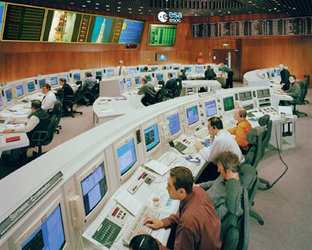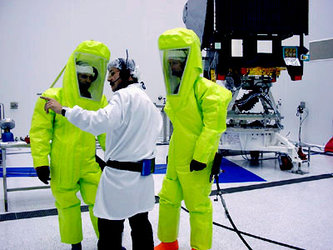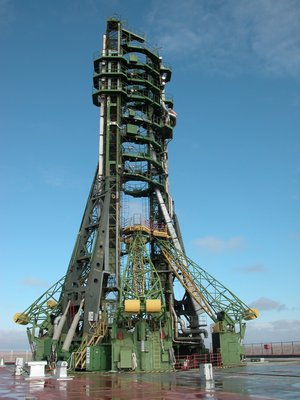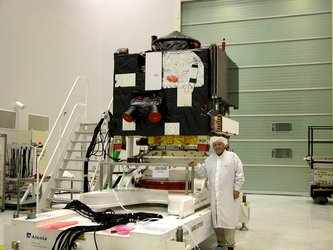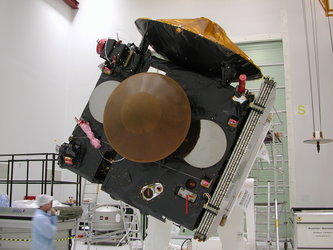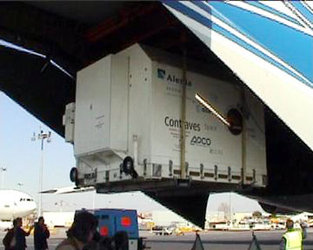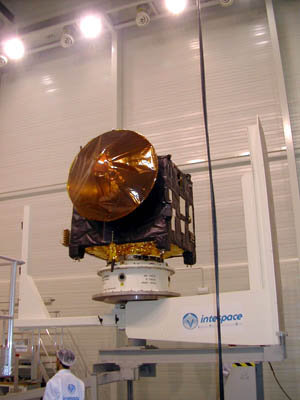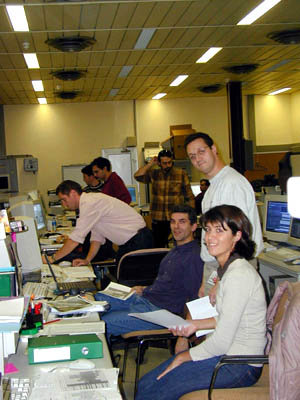Filling up for the long journey
Mars Express launch diary 10
Propellant loading is one of the most challenging and risky actions of the launch preparation. In the final phase of the preparation, the team has to work in perfect co-ordination to achieve this, as Ared Schnorhk, Principal Mechanical and Propulsion Engineer for Mars Express, explains.
"Just as motor vehicles need fuelling before long journeys, so spacecraft require full tanks before they set off to visit other worlds. To get into orbit around Mars and to perform its daily operations around the planet, Mars Express has one main rocket engine and a set of eight small control thrusters. These engines need to be fed with 'propellants', which in this case are two highly toxic chemical liquids that react together when mixed.
"Mars Express has two propellant tanks, one for each liquid, which have to be filled just before launch. In order to perform these dangerous operations, a lot of accurate preparation is needed from every participant and perfect coordination is needed with the facility operators.
"For the loading operations, a specific facility is used: the Hazardous Processing Facility. During the loading itself, contamination levels are constantly monitored, with firemen and medical support ready nearby. Access is restricted to the essential personnel only. All precautions are taken to prevent injury to people or any con-tamination of the environment.
"During a training session, our Launch Campaign Manager Michael Witting got the opportunity to experience what it is like being a fuelling operator. For this job, he has to wear a special environmentally sealed 'SCAPE' suit. SCAPE stands for Self-Contained Apparatus Protective Ensemble and is a bit like a space suit, but used for hazardous operations during ground processing.
"Even though you are never more than a few steps away from a 'SCAPE colleague', you quickly feel lonely and very dependent on the air supply, the communication system and the integrity or 'airtightness' of the suit.
"For Mars Express, we first loaded the 297 kilogrammes of oxidiser and two days later we loaded 178 kilogrammes of fuel . As hoped, everything went fine. During one of the last SCAPE activities, the communication system of one SCAPE operator failed. However, this was solved quickly. His colleague instructed him with sign language to sit down and wait until all the dangerous operations were completed.
"Once the facility was cleared of all hazardous vapour, the Mars Express spacecraft was transferred to the Upper Composite Integration Facility for stacking onto its adapter and then onto the Soyuz-Fregat upper-stage rocket.
"The success of this fuelling operation brings to an end a hectic and critical part of the launch campaign. It was the last major activity on the spacecraft, and the most dangerous, so now we are now looking forward to launch."


